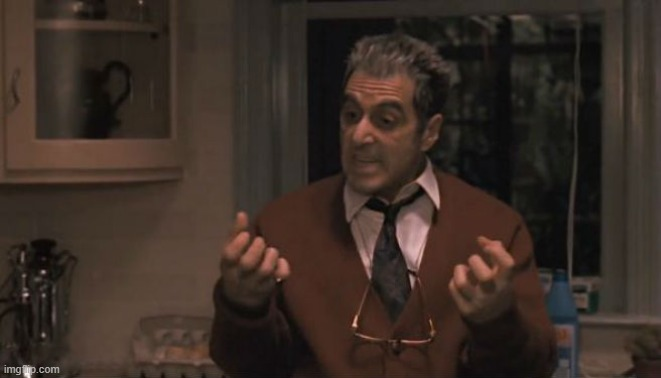p_ham
Well-known member
I've been doing a ton of custom barrel threading lately. There are a lot of options and work-arounds for various problems that a lot of folks are unaware of.
It's generally recommended that you want at least .1" over your thread diameter for a safe shoulder for suppressor use. This can be an issue for lighter profile barrels and some of the larger magnums. Below I'll outline some options if you've ever been told that your barrel can't be threaded.
1: Face registering.
This is done on barrels that aren't large enough to have a usable shoulder and still retain safe wall thickness. This does require a custom muzzle device made, whether it's a brake or suppressor adapter. This barrel was thread for 9/16-24, and the barrel diameter was almost exactly 9/16.
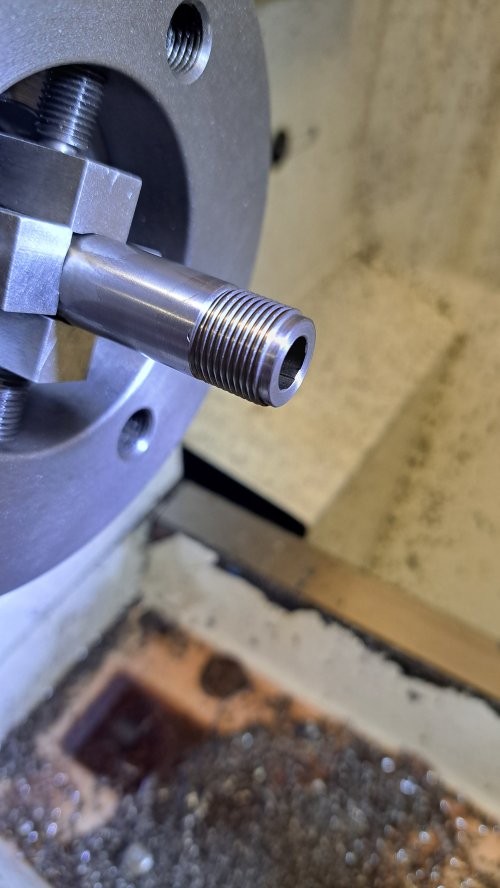
2: Permanent collar.
If your barrel diameter is at least .025" larger than the thread diameter, a collar can be installed. This barrel measured .66" and was threaded 5/8-24.
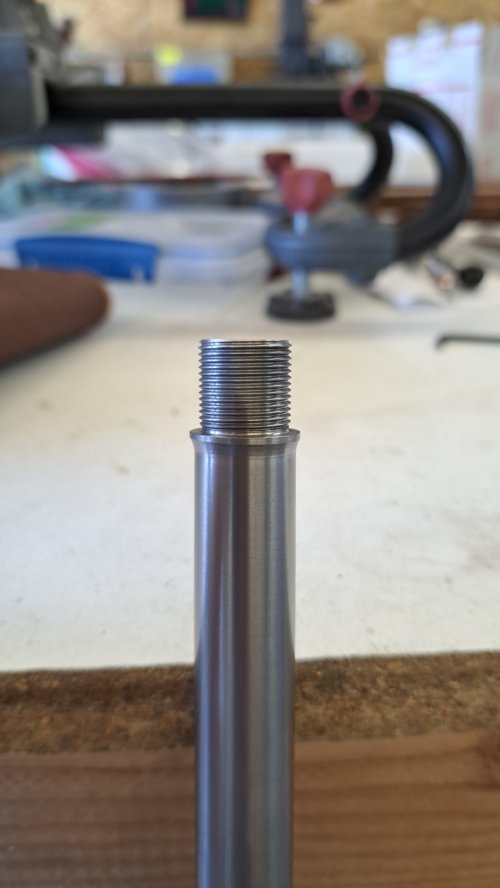
3: Internal threads.
This is more commonly done on rimfires, where it's impractical to move the front sight. The can also be done on semi auto pistols and anything with a tube magazine. The barrel is bored and threaded, then an adapter is used with whatever device you choose.
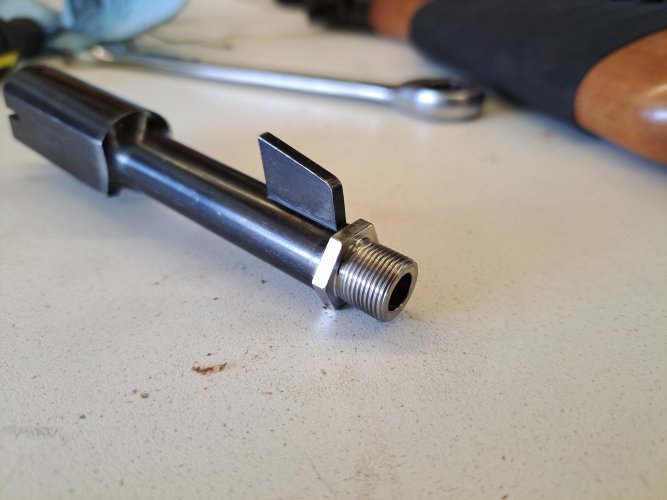
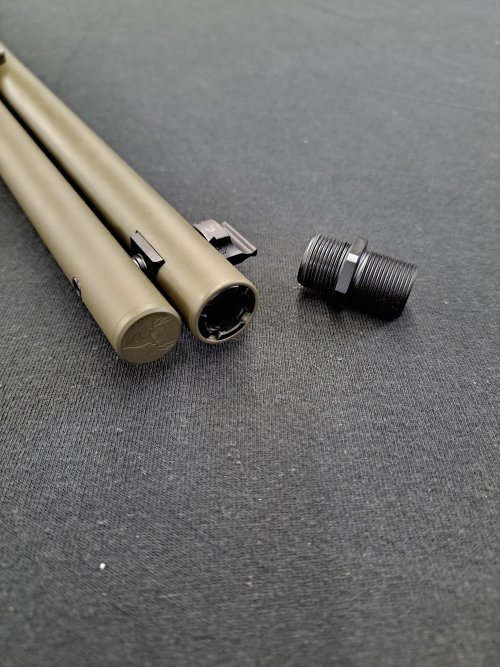
4: Taper lock threads.
This is the Q/Sig taper of 25 degrees. It's a very secure method of attachment. Conventional muzzle devices can still be used with an inexpensive taper adapter. I've used this on barrel diameters of .05" larger than thread OD and greater.
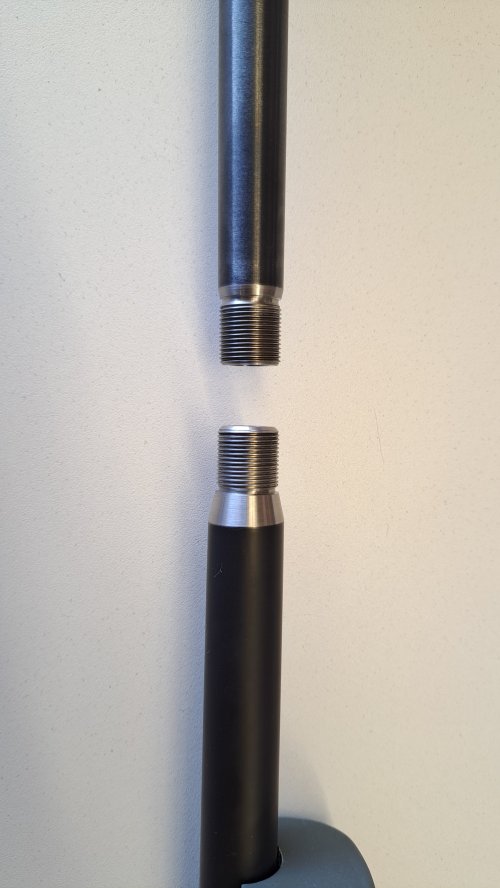
Bonus: Fluted barrels.
This is a new technique I'm employing. This client wanted cut to 18" and 5/8 threads but his barrel flutes were too deep. I cut the barrel 9/16-24 and installed a permanent adapter. Instead of dead-ending the flutes at the adapter I went ahead and finished them out on the mill. The brake was timed and everything blended. I think this is an attractive option for fluted barrels, and can be done when no adapter is needed as well.
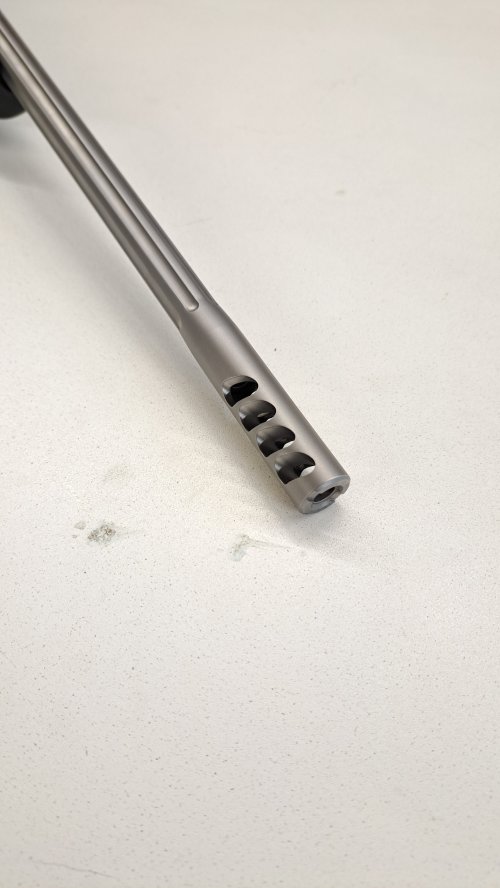
It's generally recommended that you want at least .1" over your thread diameter for a safe shoulder for suppressor use. This can be an issue for lighter profile barrels and some of the larger magnums. Below I'll outline some options if you've ever been told that your barrel can't be threaded.
1: Face registering.
This is done on barrels that aren't large enough to have a usable shoulder and still retain safe wall thickness. This does require a custom muzzle device made, whether it's a brake or suppressor adapter. This barrel was thread for 9/16-24, and the barrel diameter was almost exactly 9/16.

2: Permanent collar.
If your barrel diameter is at least .025" larger than the thread diameter, a collar can be installed. This barrel measured .66" and was threaded 5/8-24.

3: Internal threads.
This is more commonly done on rimfires, where it's impractical to move the front sight. The can also be done on semi auto pistols and anything with a tube magazine. The barrel is bored and threaded, then an adapter is used with whatever device you choose.


4: Taper lock threads.
This is the Q/Sig taper of 25 degrees. It's a very secure method of attachment. Conventional muzzle devices can still be used with an inexpensive taper adapter. I've used this on barrel diameters of .05" larger than thread OD and greater.

Bonus: Fluted barrels.
This is a new technique I'm employing. This client wanted cut to 18" and 5/8 threads but his barrel flutes were too deep. I cut the barrel 9/16-24 and installed a permanent adapter. Instead of dead-ending the flutes at the adapter I went ahead and finished them out on the mill. The brake was timed and everything blended. I think this is an attractive option for fluted barrels, and can be done when no adapter is needed as well.




